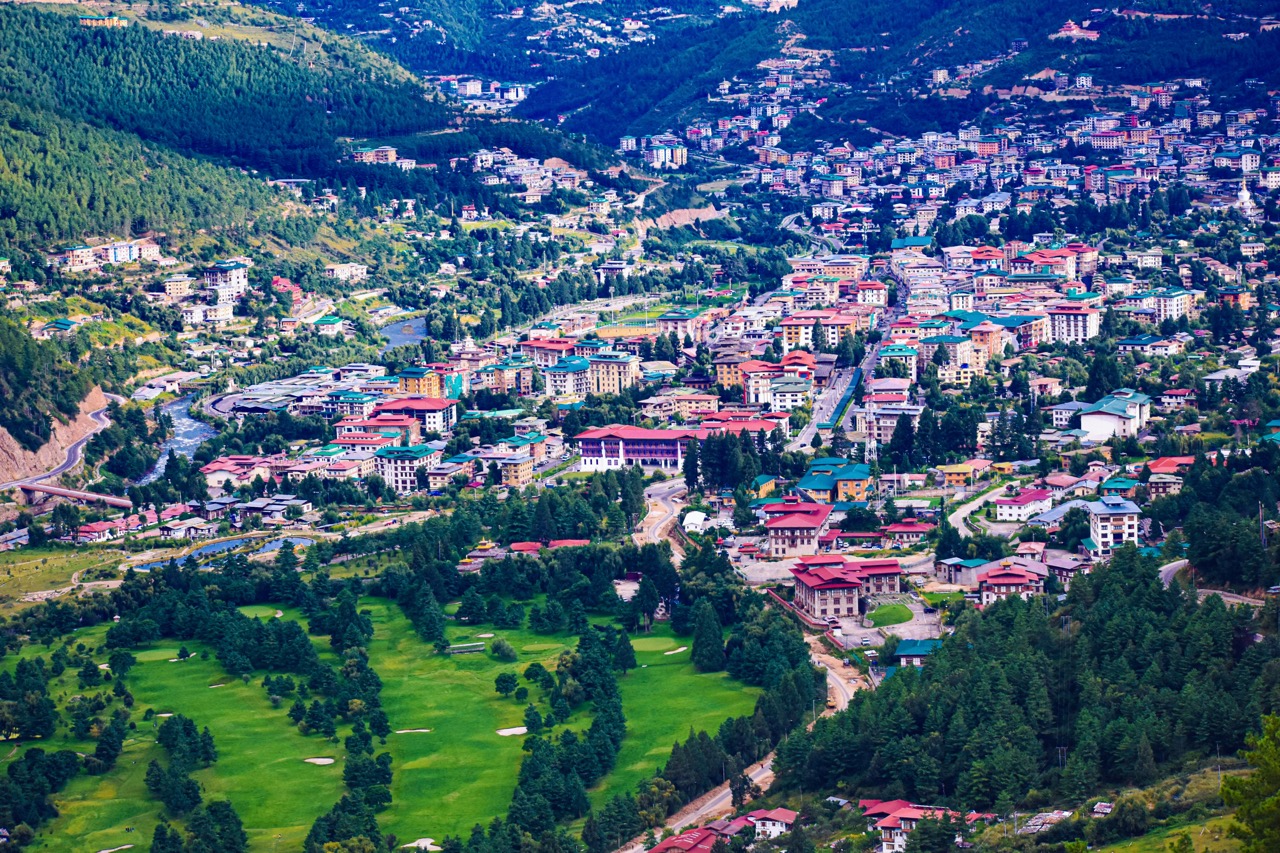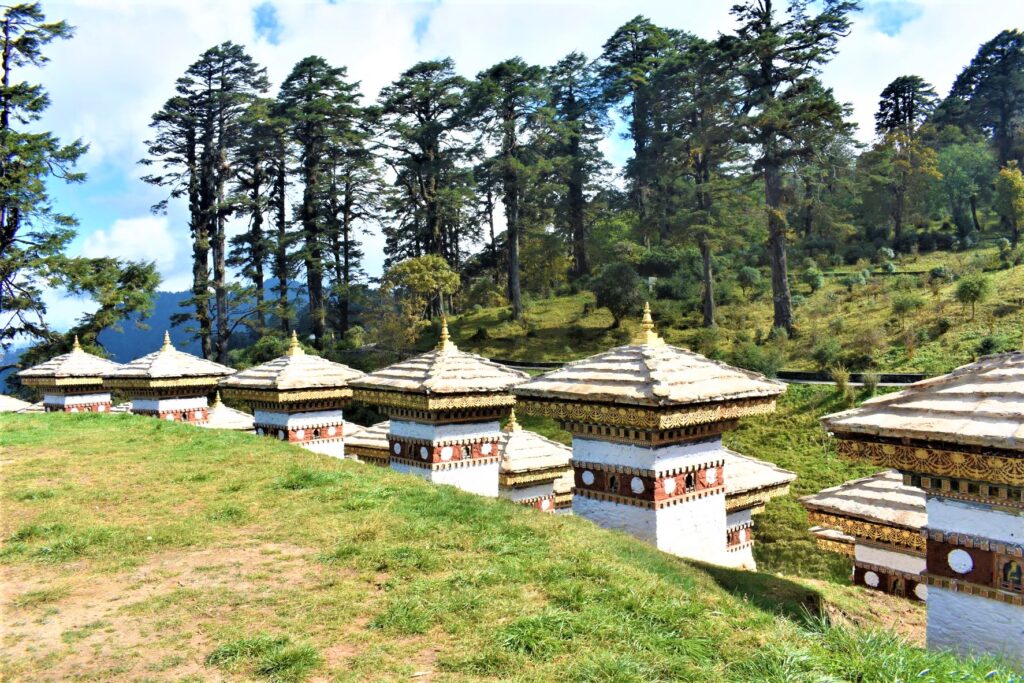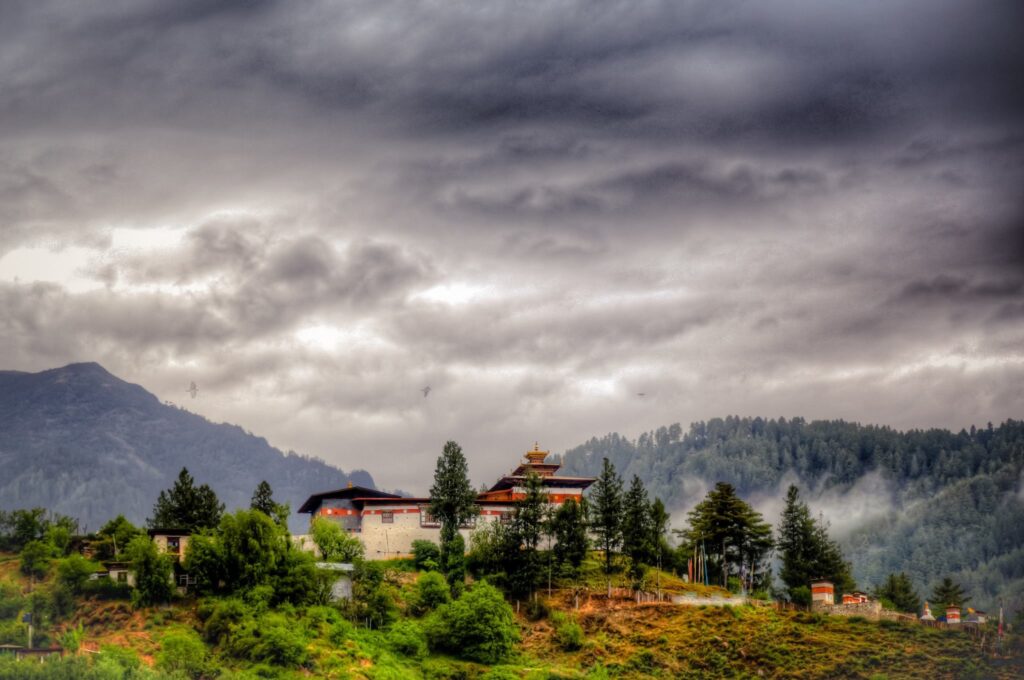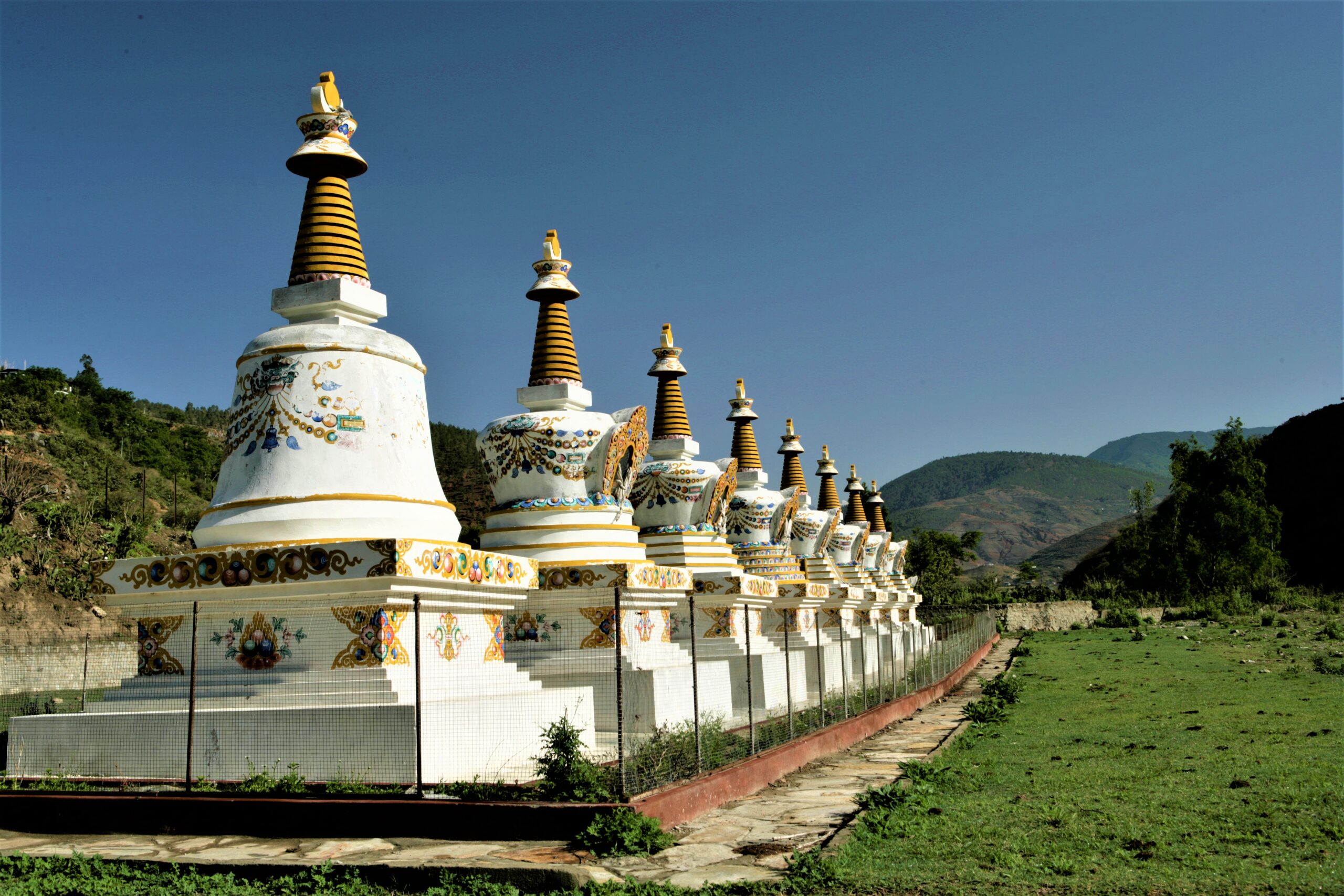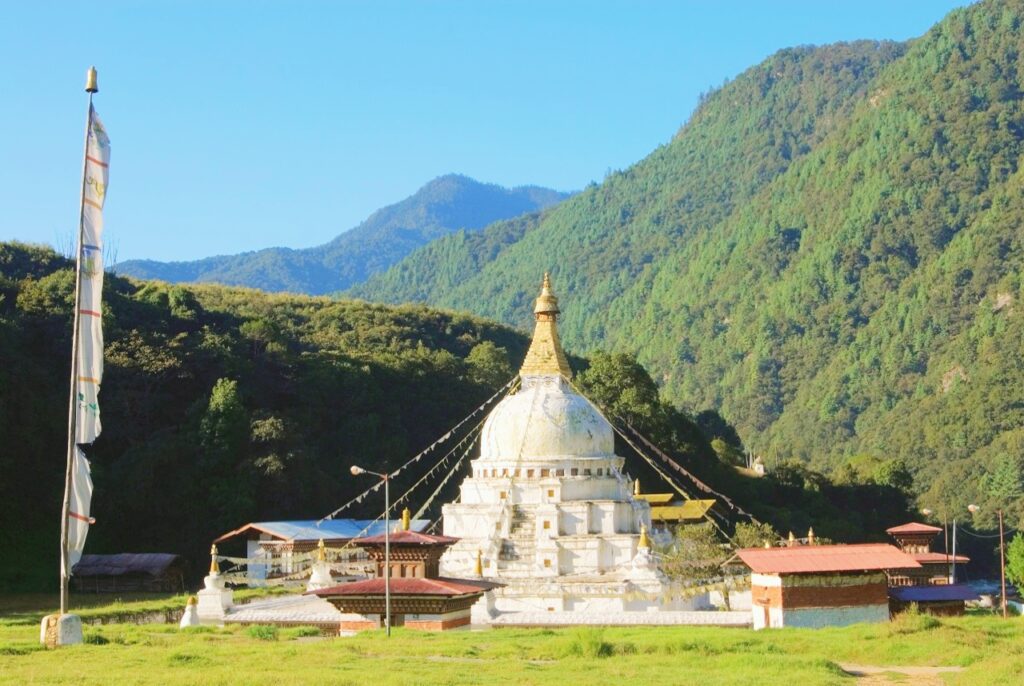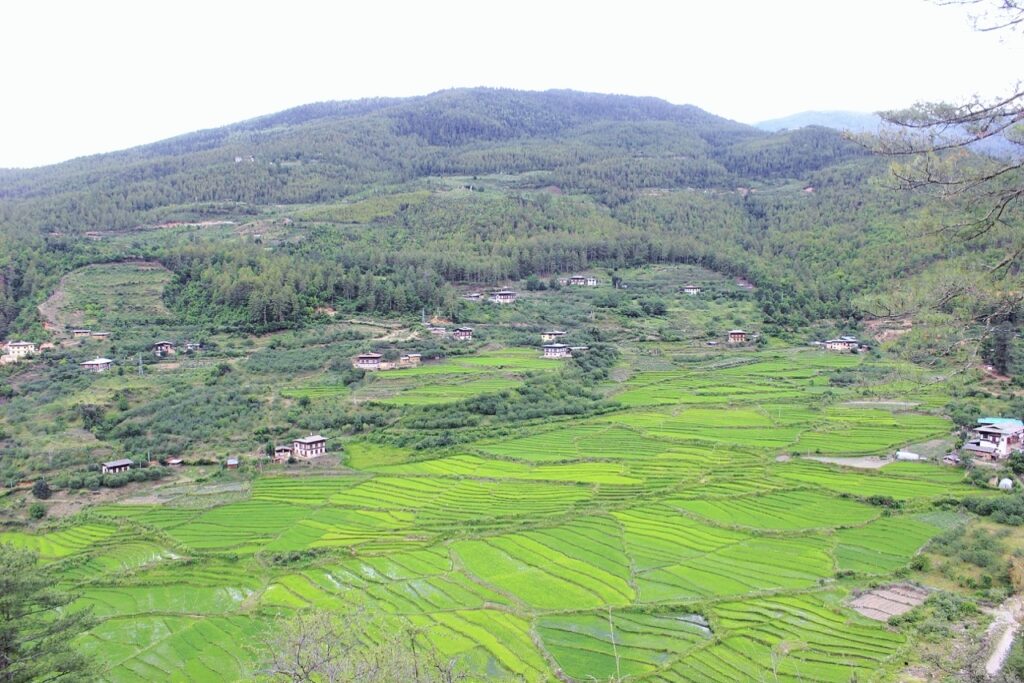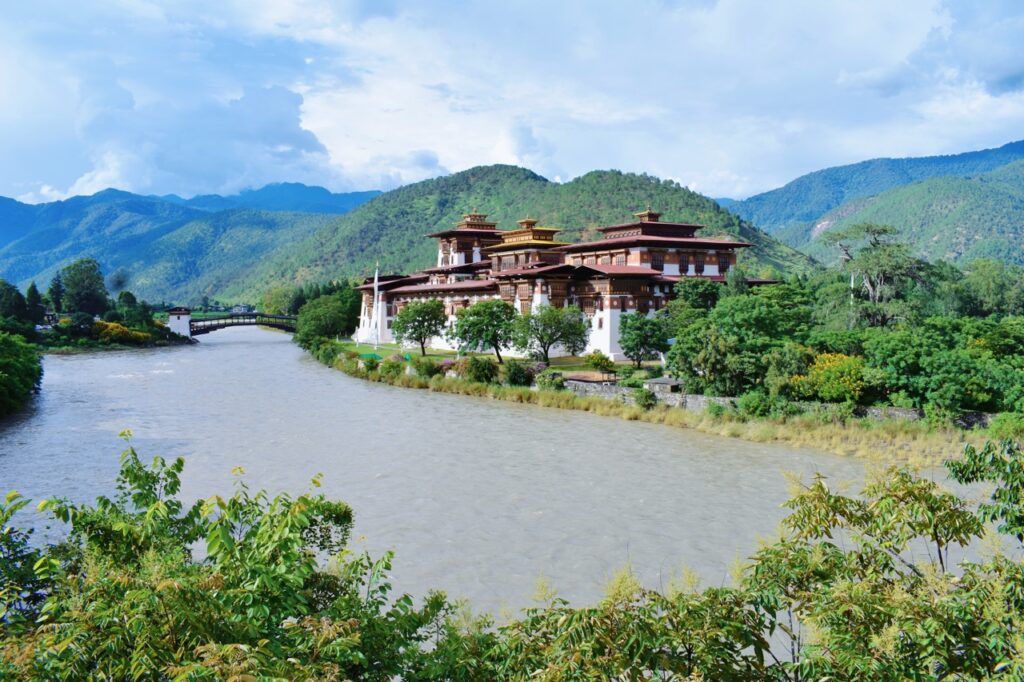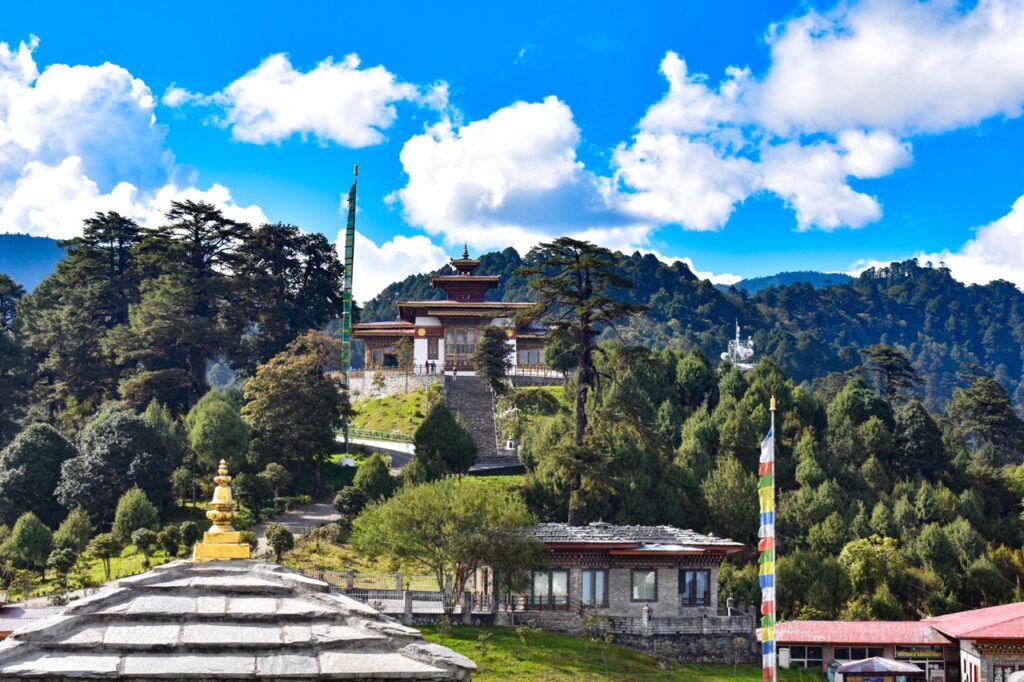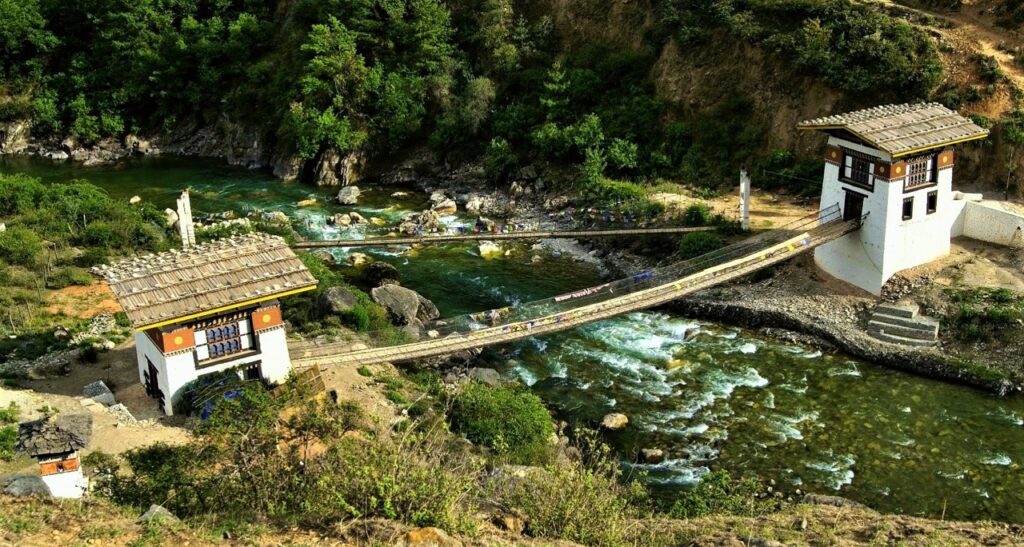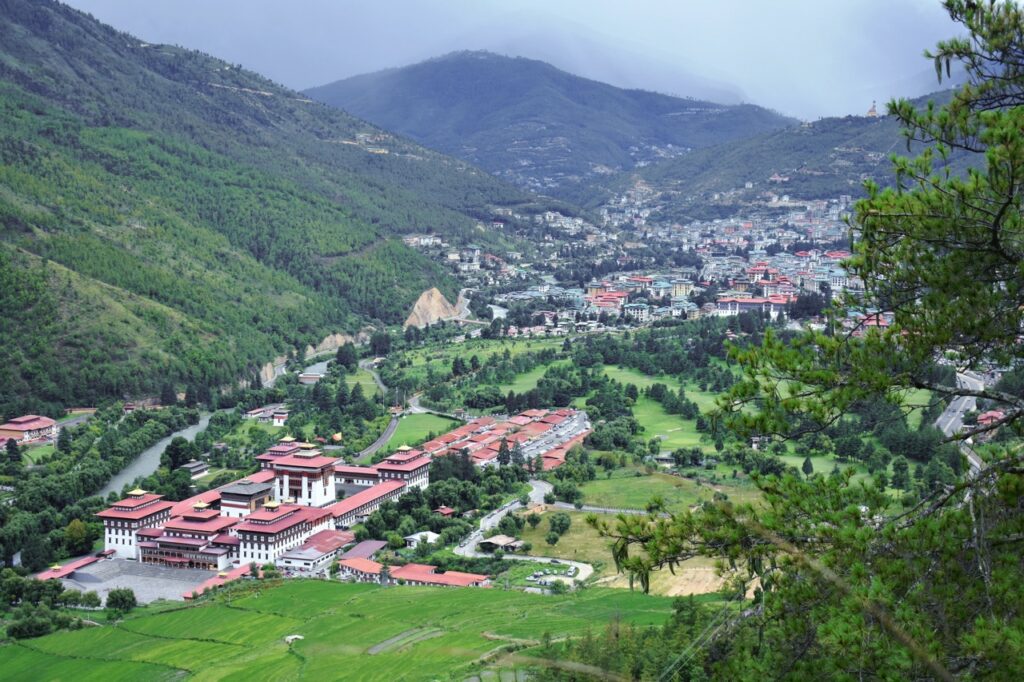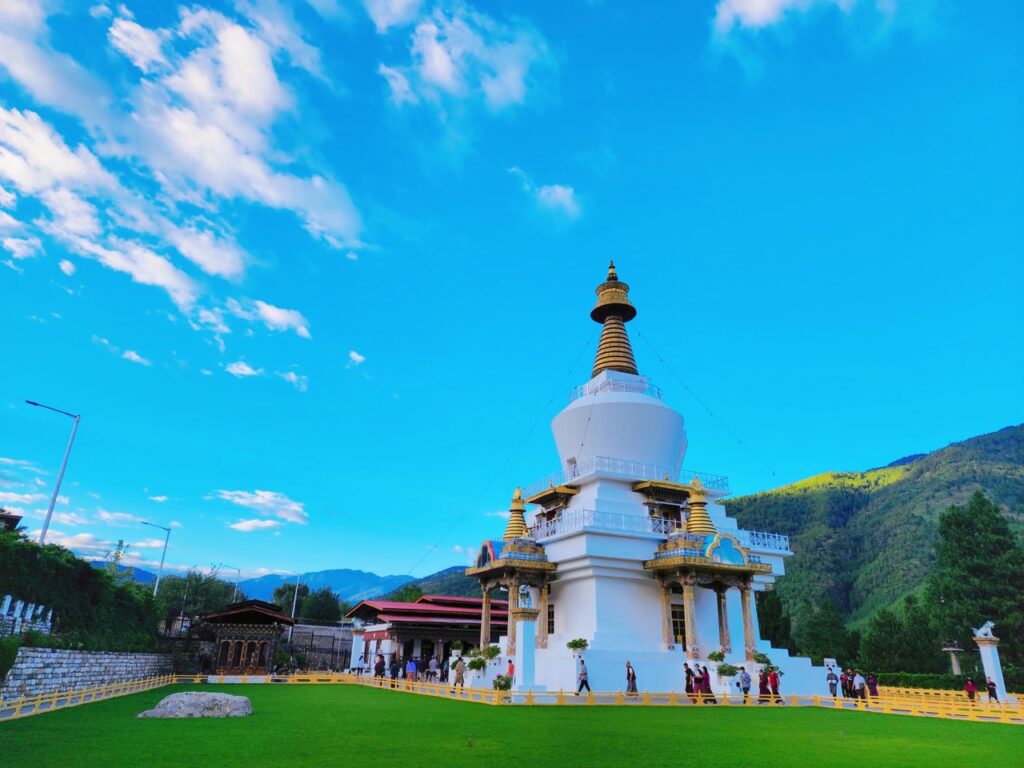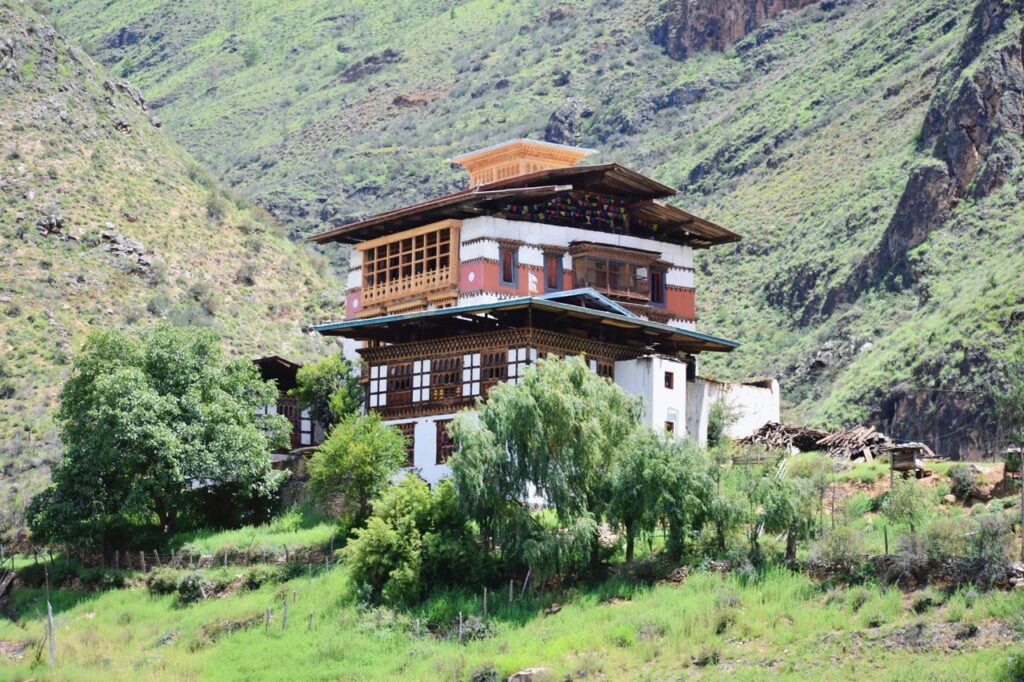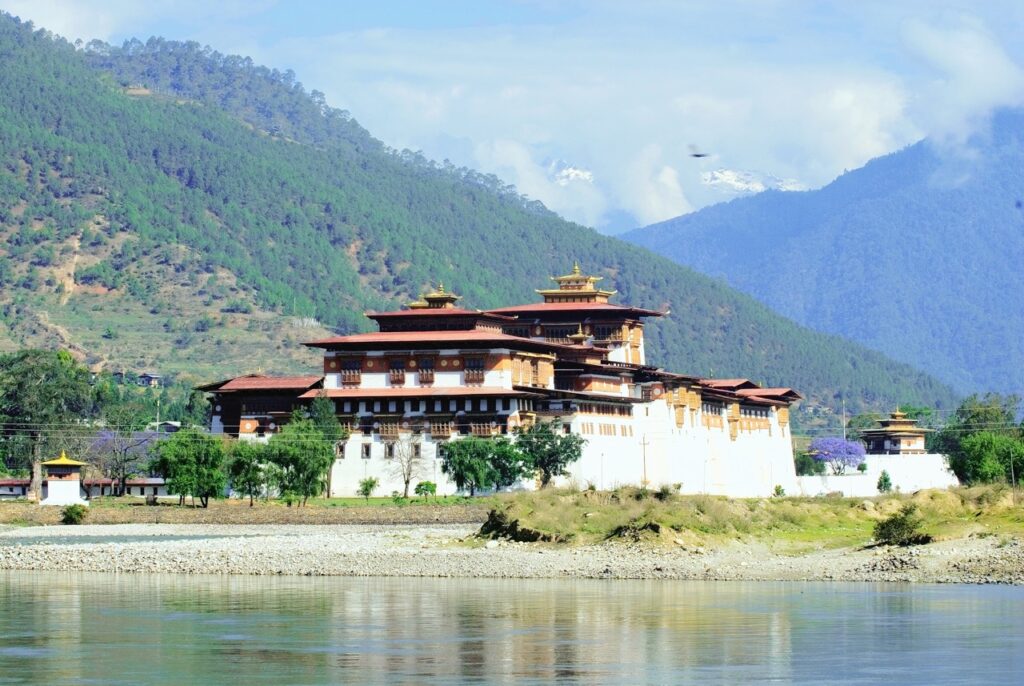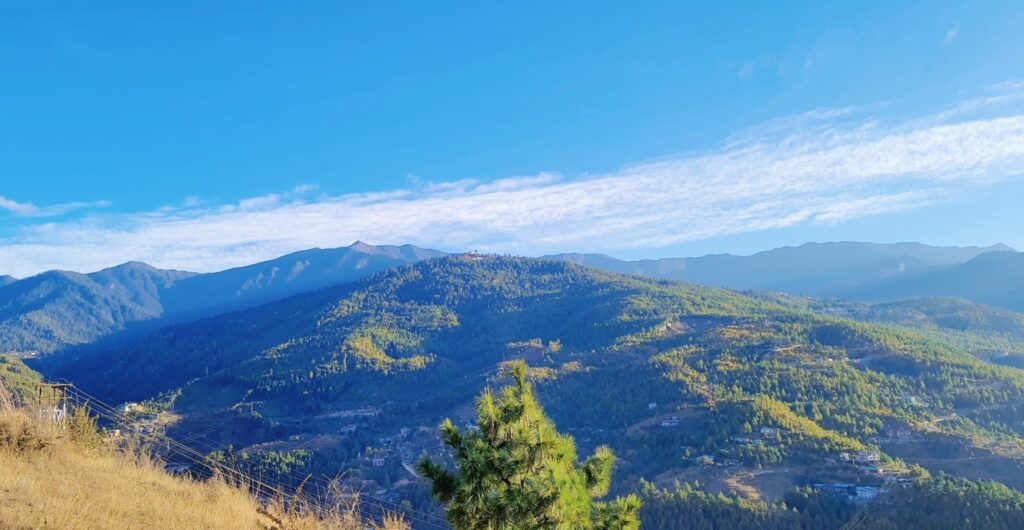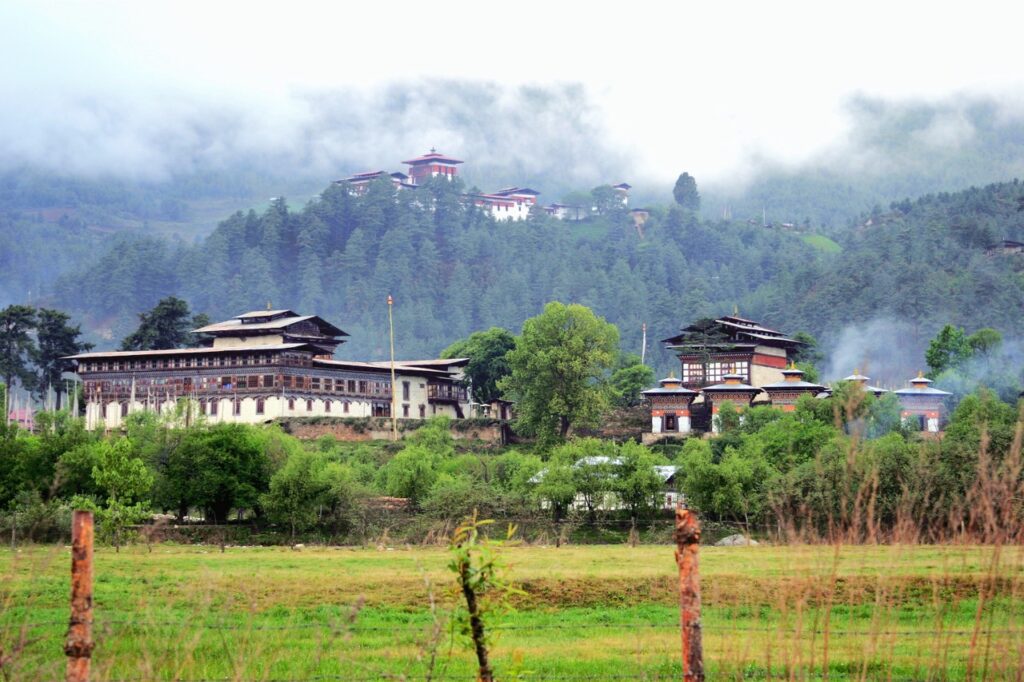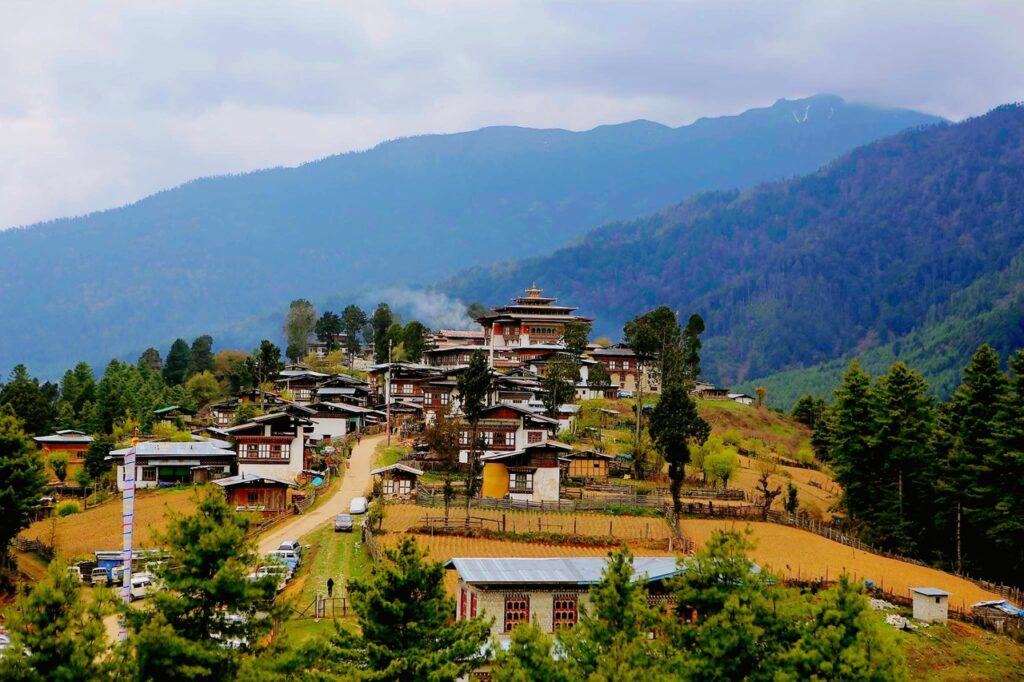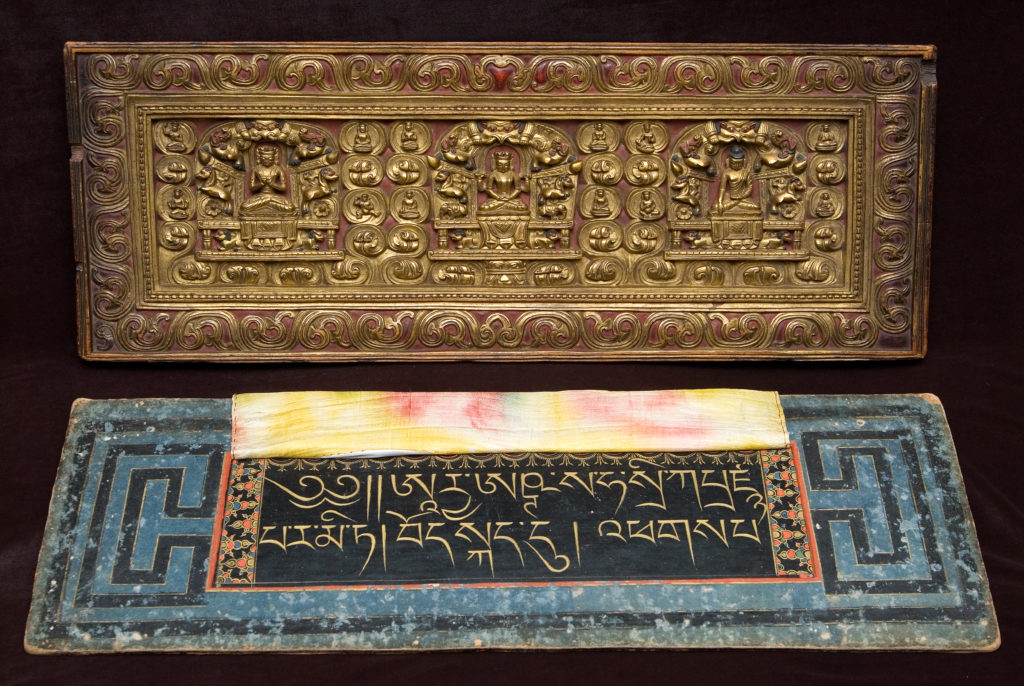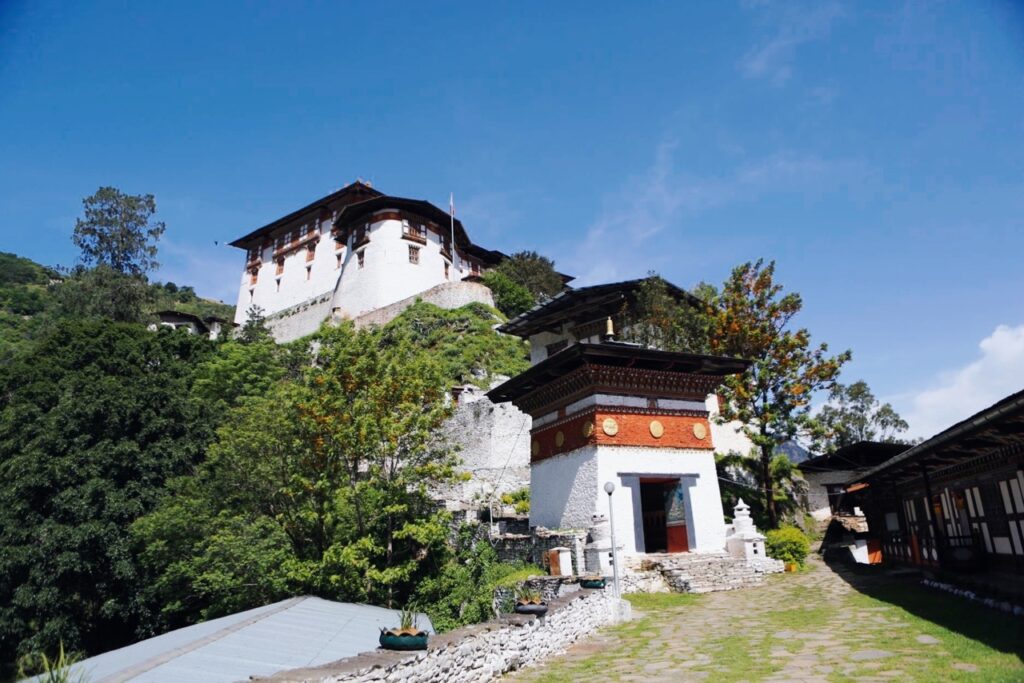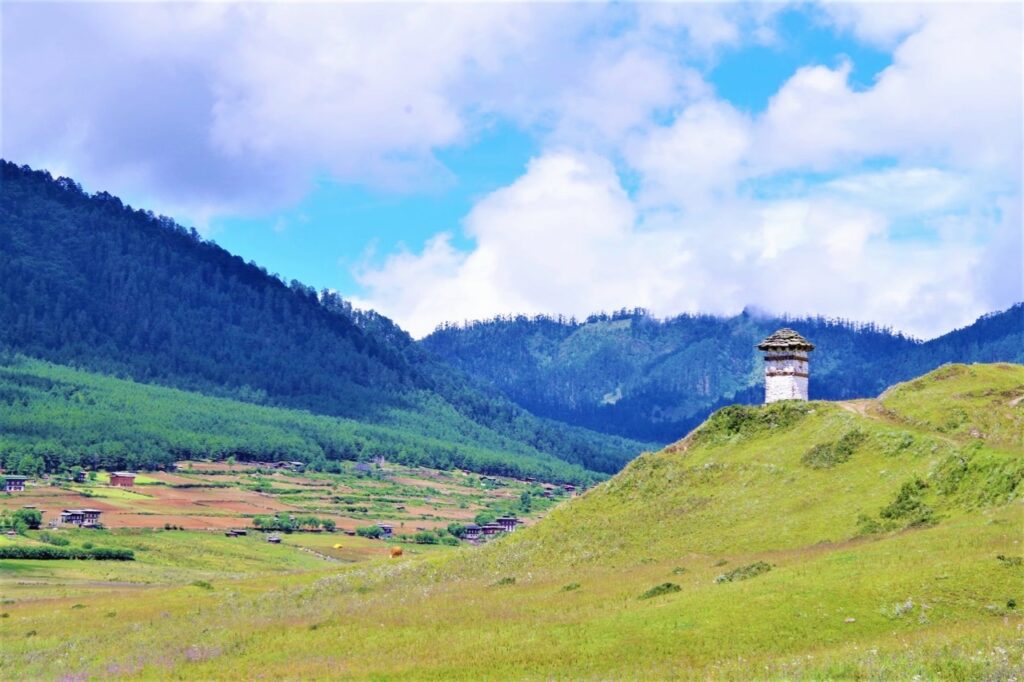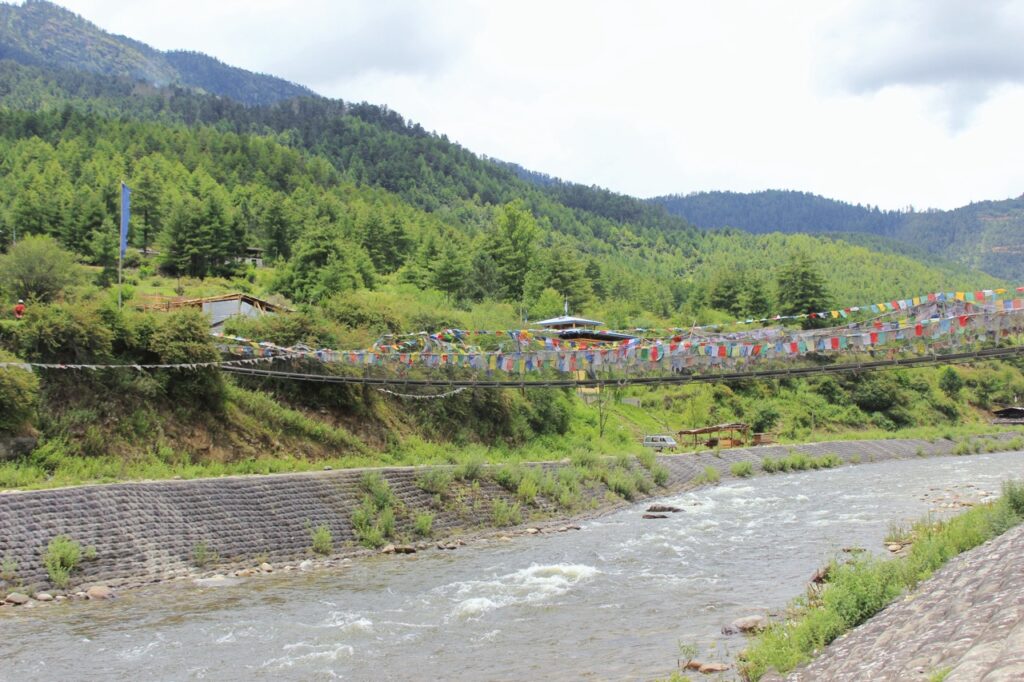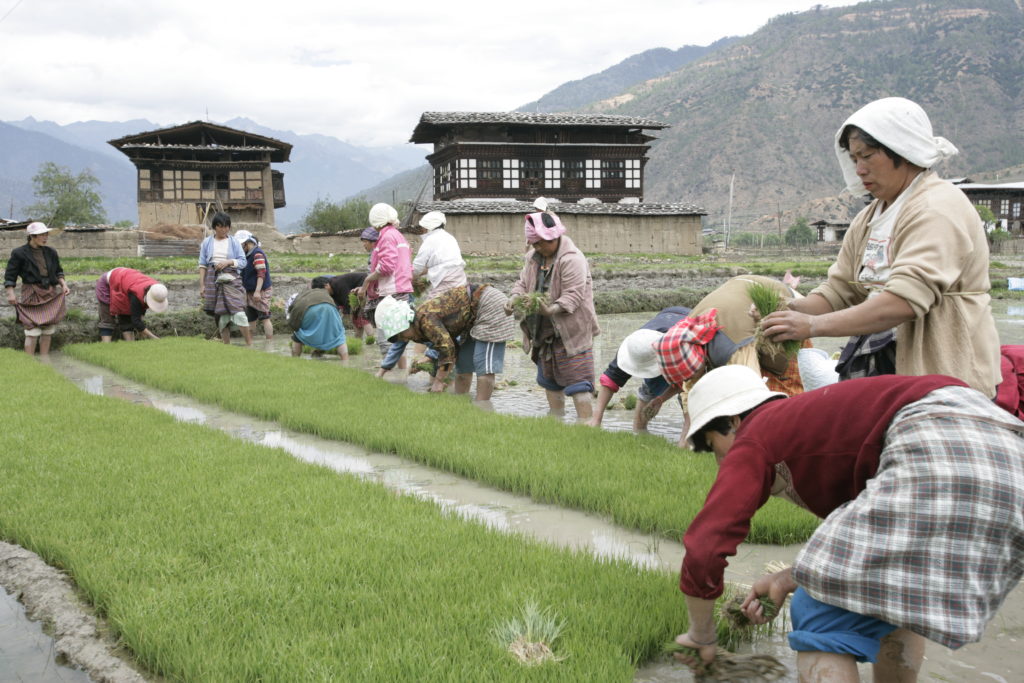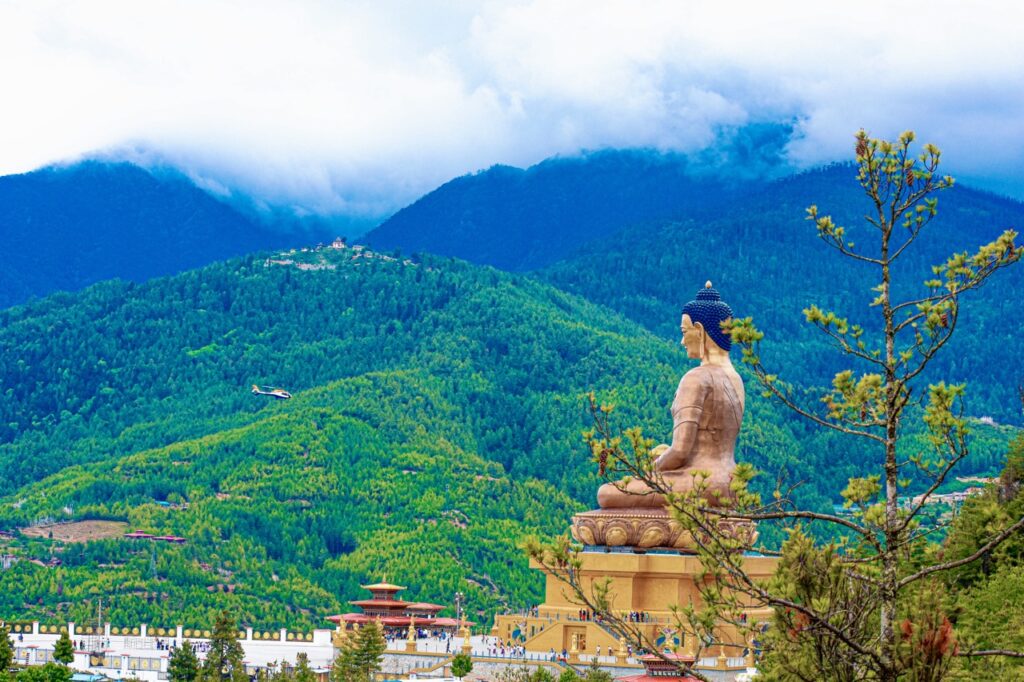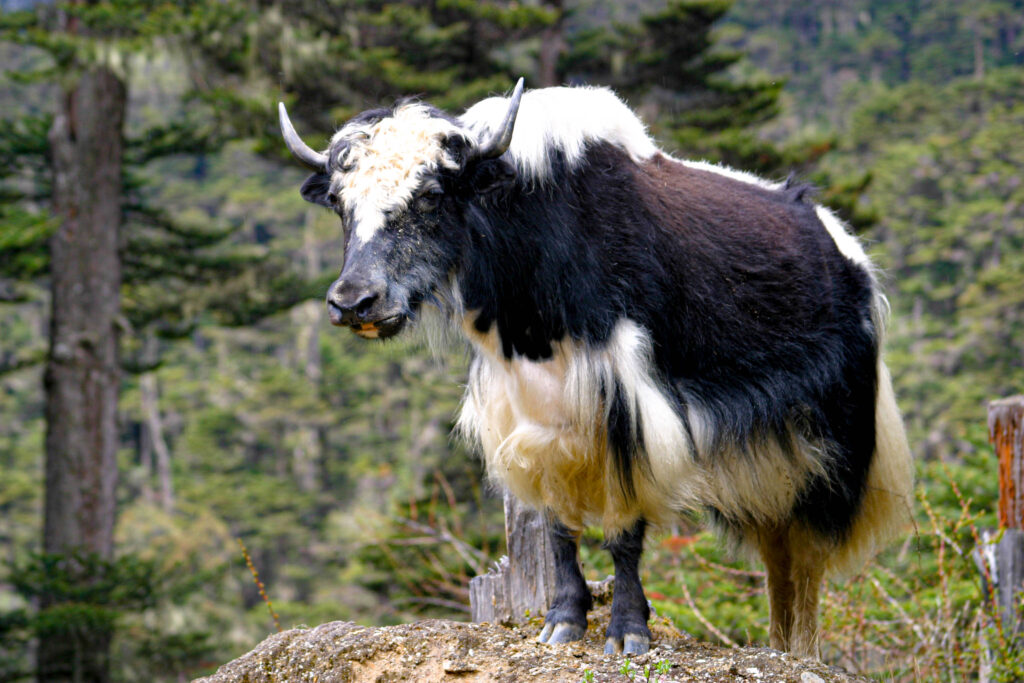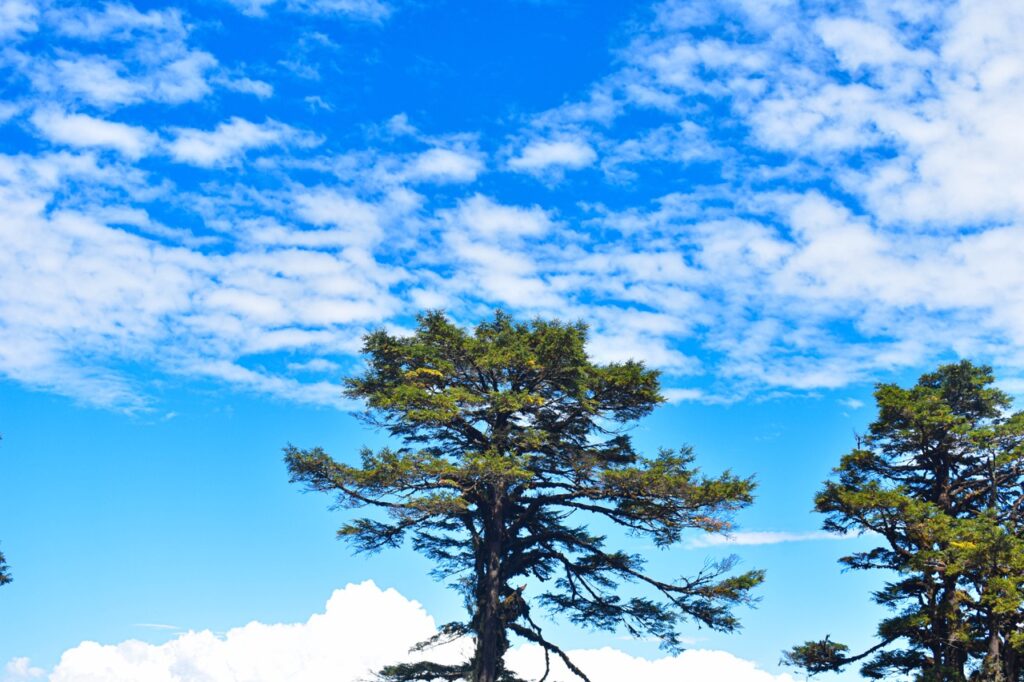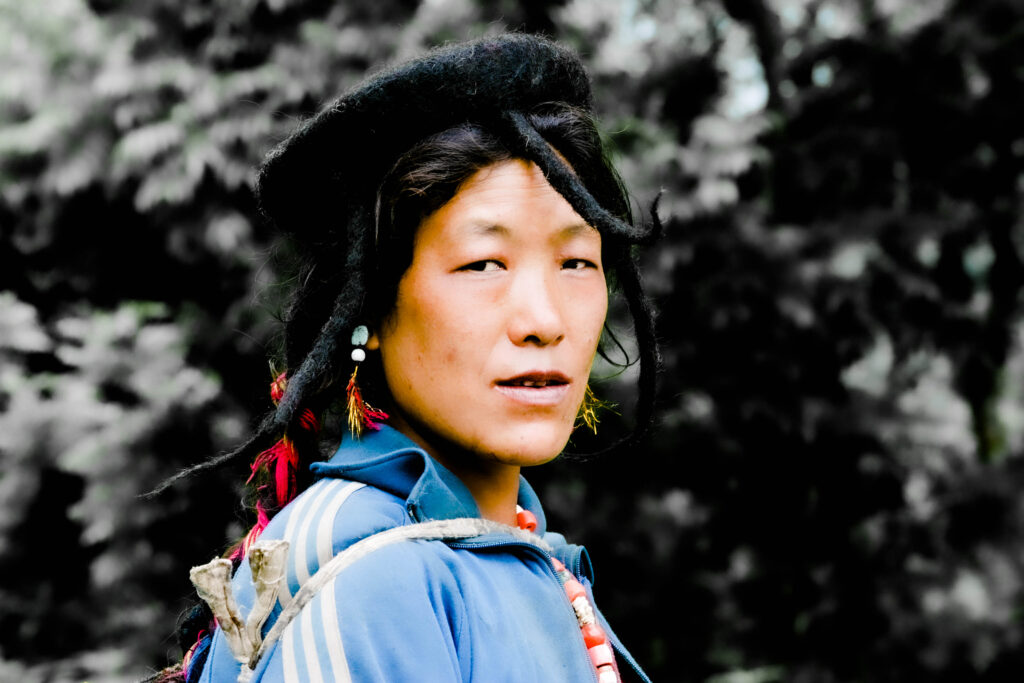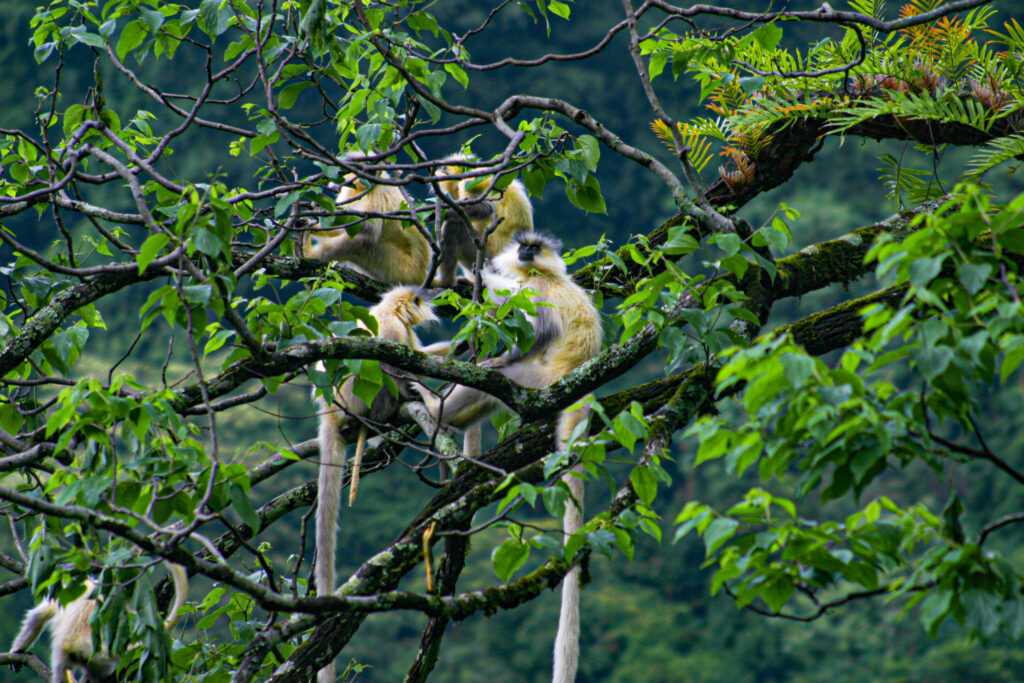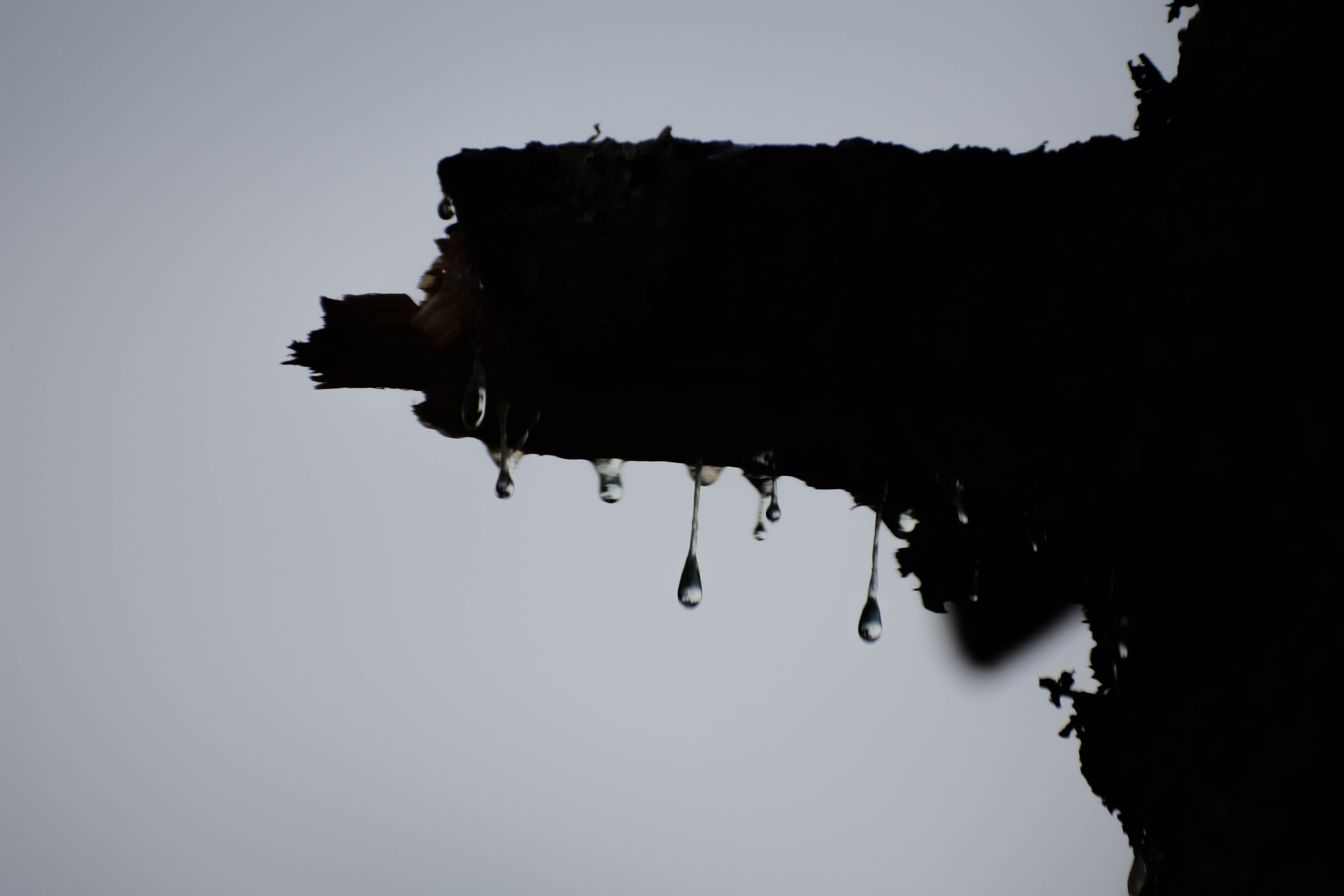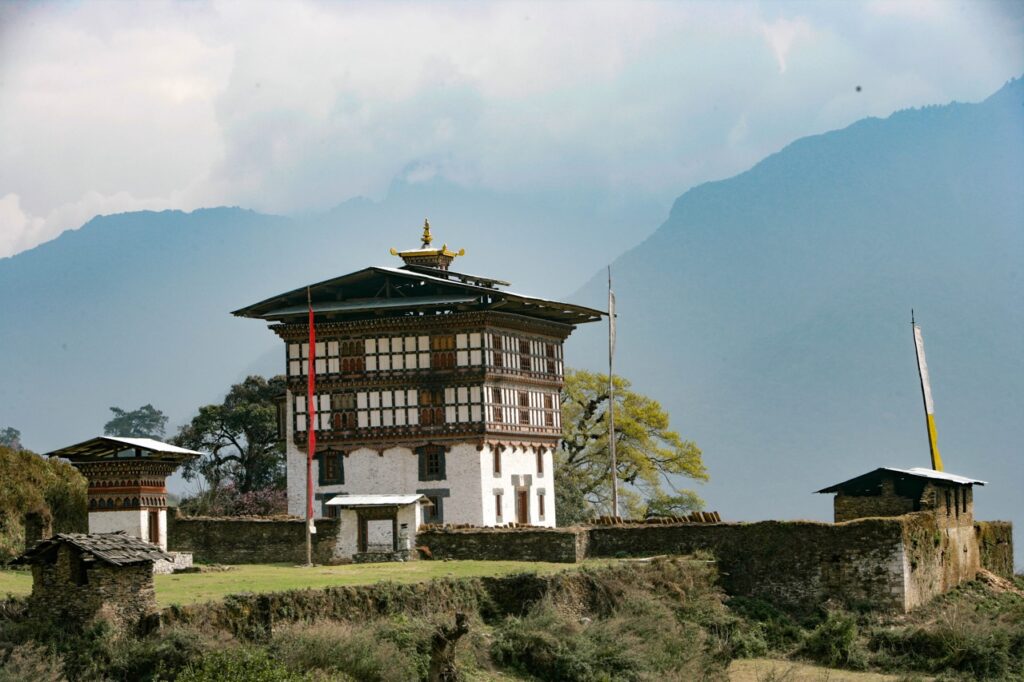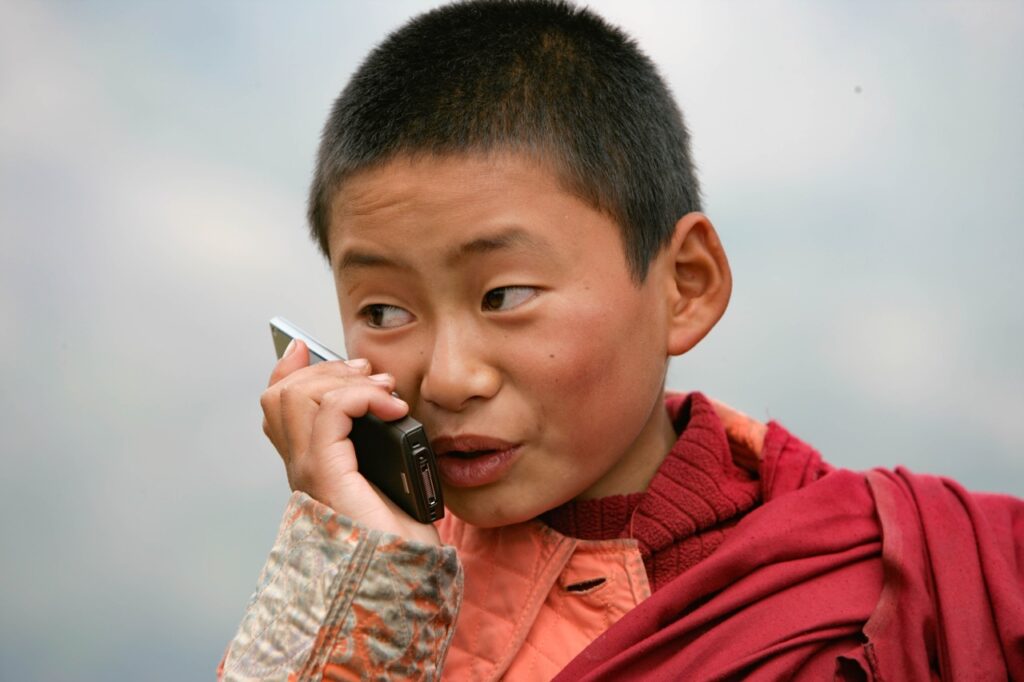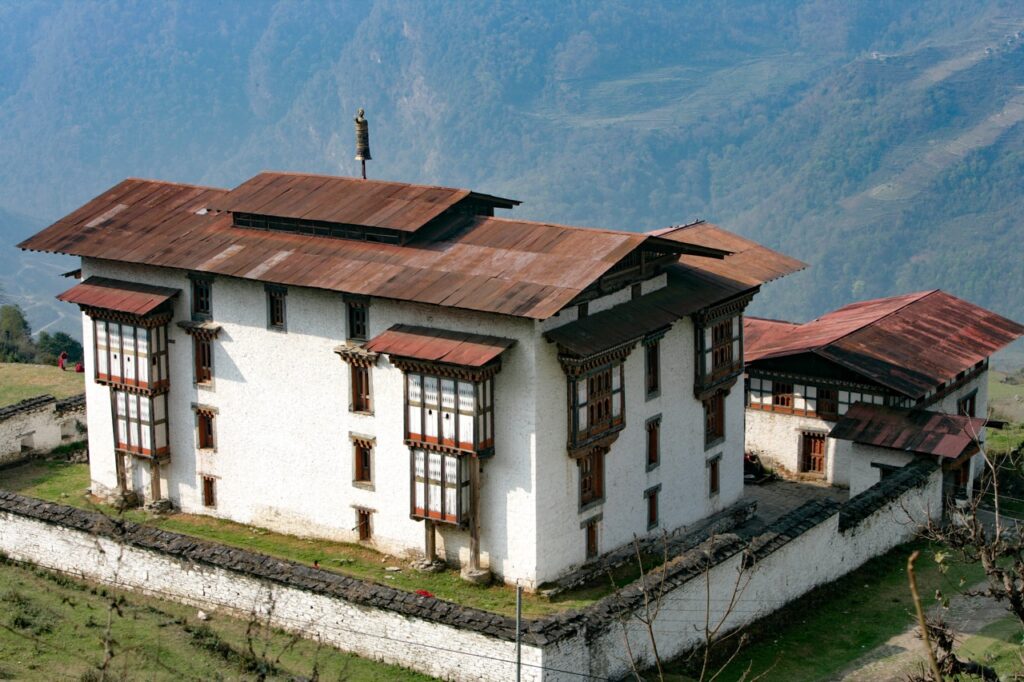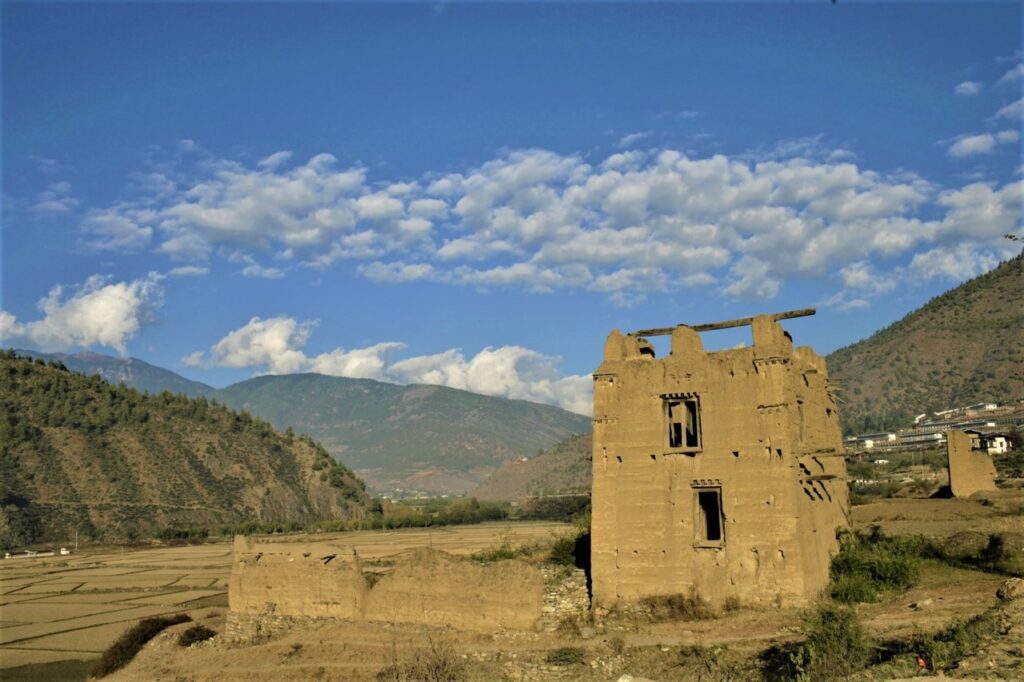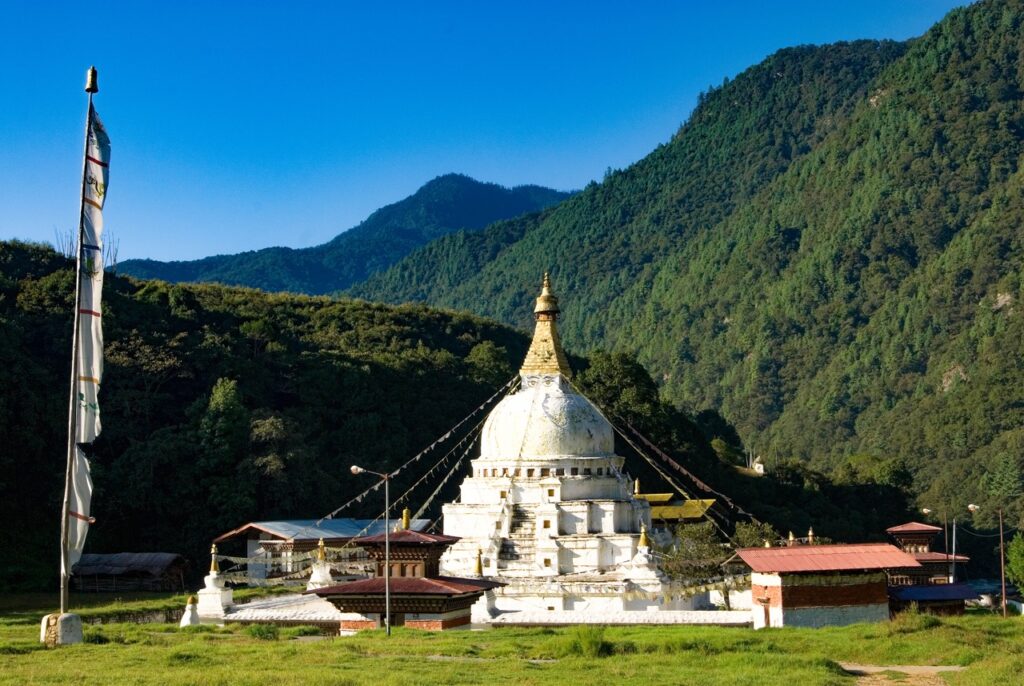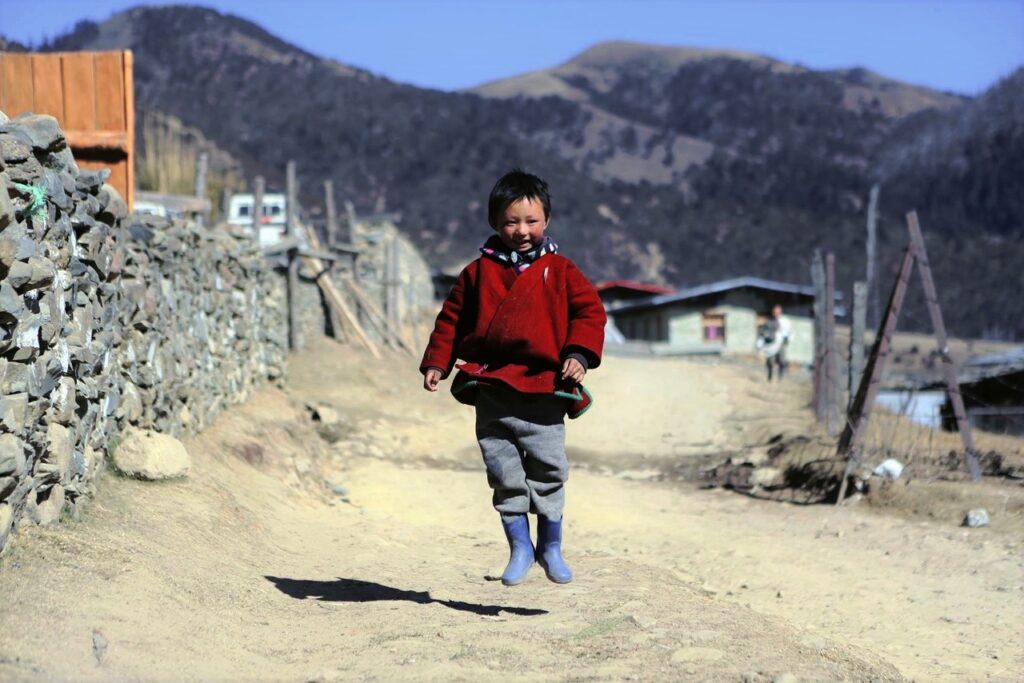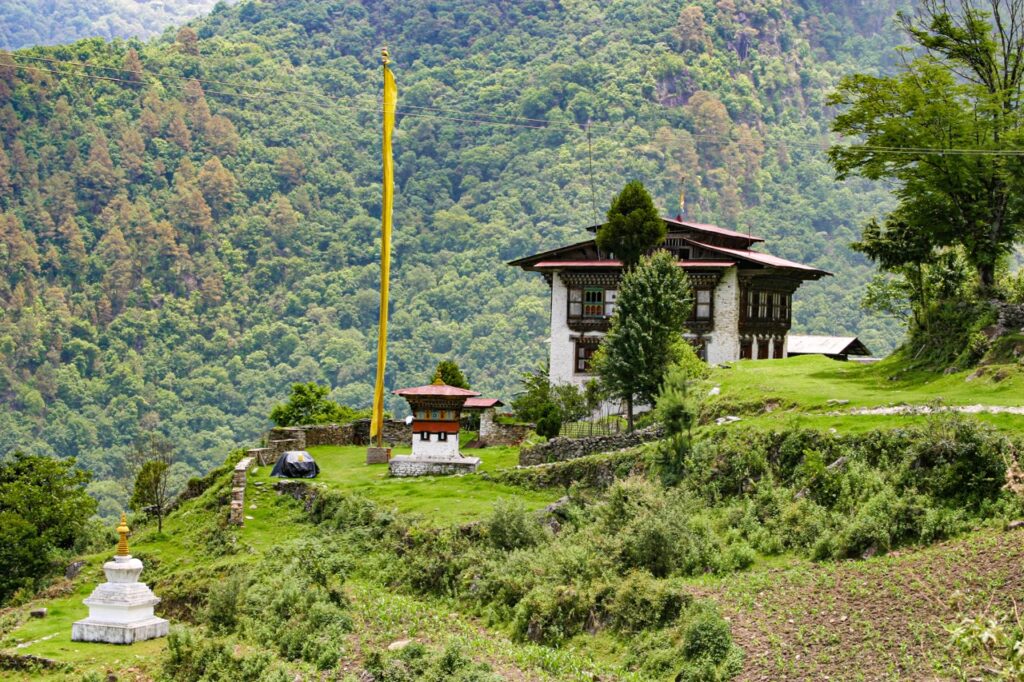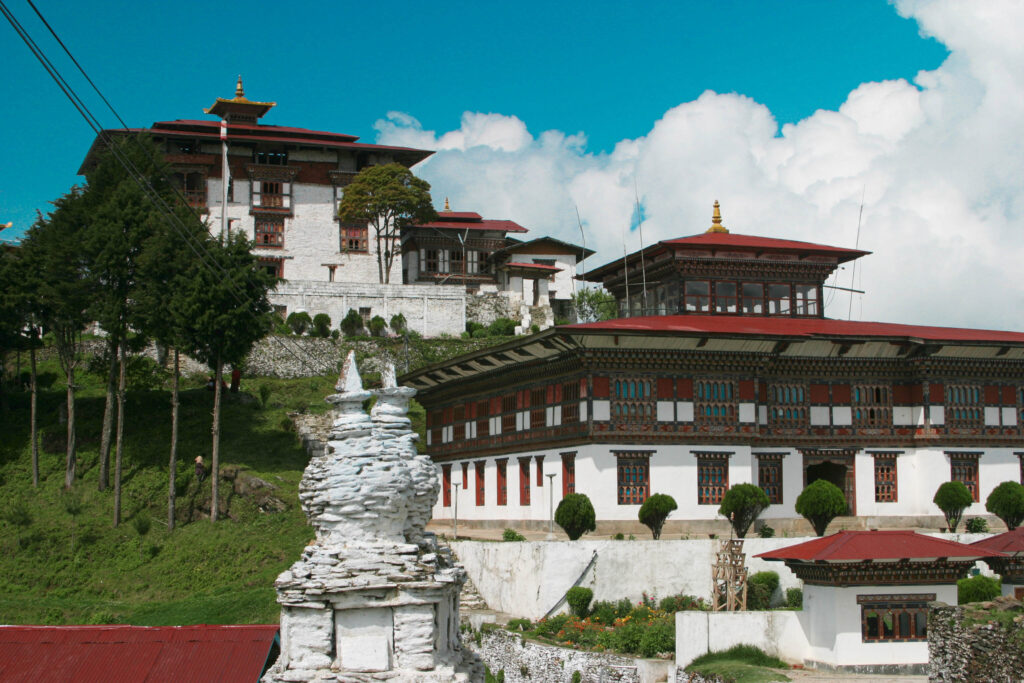10 Day Bhutan Escapade Tour
Tour Highlights
Tour fact
Duration:10 days 9 nights
Grade: Moderate
Season:Mar,april,May,jun,
Sep,Oct,Nov.
Places:Paro,Thimphu,Gangtey,
Punakha,Bumthang.
Accommodation
Plan:3 star hotel
Options: 4 or 5 star hotel
Day 1 Paro-Thimphu
Kuzuzangpo and warm Welcome to Bhutan! On arrival at Paro International Airport, your guide will greet you upon exiting the arrival hall. Today, we follow a gentle schedule as we acclimatize to the altitude. After lunch in Paro, we make the one hour drive to Thimphu, Bhutan’s capital and home to around quarter of our population.
En route we take the opportunity to stretch our legs with an easy 10 minute walk to Tachog Lhakhang (temple) reached by crossing Paro Chhu (river) on one of the few remaining ancient iron chain bridges, both built circa 1420 by the Tibetan master Tangtong Gyelpo (aka the Bridge Builder).
In the afternoon we visit Buddha Dordenma (Buddha Point) in Kuenselphodrang Nature Park, overlooking Thimphu City, the site of one of the largest statues of Buddha Shakyamuni in the world (completed in 2015), built to spread peace and happiness in the world.
We then visit the National Memorial Chorten (stupa) where we can join local worshippers who gather to circumambulate this famous stupa. This Thimphu landmark and sacred site was built in 1974 in honor of Bhutan’s visionary Third King, Jigme Dorje Wangchuck.
In the evening we have time to relax and settle into our hotel before getting together for an informal meet-and-greet over dinner.
Day 2 Thimphu to Punakha
From Thimphu we head to Punakha, via Dochula Pass (3100m elevation), the site of 108 stupas built by Bhutan’s Queen Mother in memory of Bhutanese and Indian soldiers who died in 2003. On a clear day, the view from here is spectacular, over the forests below to the snow-capped Himalayan Mountains.
We then descend to Punakha Valley, at 1200m elevation, where we visit the majestic and beautiful Punakha Dzong. Located where the rivers Pho Chhu and Mo Chhu meet, this stunning example of ancient Bhutanese architecture is the second oldest and second largest of Bhutan’s Dzongs. Completed in 1637, it served as the country’s capital from 1637 to 1907. Today, it is the winter residence of Bhutan’s Monastic Body and home to some of our most sacred ancient relics.
In the afternoon we visit Khamsum Yulley Namgyal Chorten (stupa), majestically situated on a ridge above Punakha Valley This 30 meter high stupa was a gift from Bhutan’s third Queen Mother, Ashi Tshering Yangdon Wangchuck, and was built to ward off evil and bring peace and harmony for all living beings.
We then visit Chimi Lhakhang (Fertility Temple), built in 1499 by Lama Ngawang Chogye on a hill blessed by the 15th century Buddhist leader Drukpa Kinley (the Divine Madman).
Day 3 Punakha to Bumthang
We leave Punakha and travel to Bumthang.
Our route passes through beautiful forest landscapes and breathtaking mountain views. On the way we will host the Wind-Horse Prayer Flags and chant prayers to overcome your life’s obstacles and to fulfill your aspiration dreams.
By early evening we reach Bumthang in Central Bhutan. Bumthang is the spiritual heartland of Bhutan, with many religious relics and histories found here. This region is home to some of our oldest Buddhist temples and monasteries, such as Jambay Lhakhang, and many Guru Rinpoche sacred sites which remain undisturbed in pristine nature. It is here that Buddhism was first introduced in the 8th century by the Indian Tantric master, Padmasambhava (Guru Rinpoche) and later many important Tibetan masters and Tertons (treasure-discoverers) lived and practiced in this sacred region.
Visitors are also attracted to Bumthang's scenic beauty and biodiversity, with its broad gentle valleys and forests of native pines. It is an ideal place to practice meditation, surrounded by the blessings of ancient masters and relax in its peaceful natural environment.
Day 4 Bumthang via Tharpaling Monastery
Tharpaling Monastery, located at 3600m, overlooks Chumey Valley in Bumthang. The monastery was founded by Longchenpa (1308-1363), the great philosopher and practitioner of Dzongchen. Here great masters including Jigme Lingpa, Nyoshul Khen Rinpoche and Dilgo Khyentse Rinpoche meditated. Nearby are Chodrak Monastery, where Guru Rinpoche meditated, and Dzambala Lhakhang. Longchenpa’s Seat, a rock throne where Longchenpa wrote part of the Seven Treasure texts (the highest Dzongchen text), is located above Tharpaling.
We begin our day with a visit to the sacred site at Tharpaling and a brief introduction to Guru Yoga based on Longchenpa’s teaching and sadhana practice, followed by a period of silent meditation practice. After lunch, we walk up to Longchenpa's Seat and along the way visit Chodrak and Dzambala monasteries to offer prayers.
Day 5 Bumthang Sacred Sites
In the morning we make pilgrimage to the sacred place of Guru Rinpoche's Cave (Shungdra), driving north from Bumthang town along the Chamkhar River and through beautiful native pine forest. This 800 year old site is blessed with rare antique ornaments, signs and peaceful energy. We offer prayers and meditation practice here.
Then we visit Kurje (body print), regarded as one of the most sacred sites in Bhutan. It is here that Guru Rinpoche meditated for three month inside a cave to subdue a powerful local deity and then left his imprint as the symbol of the first introduction of Buddhism in Bhutan. Later the monastery was built to preserve this important holy site and behind it there is a tall cypress tree believed to have sprouted from the walking stick of Guru Rinpoche. Within Kurje Monastery we can view majestic statues, paintings and ancient sacred ornaments. After visiting the monastery, we can walk to the nearby Kurje Holy Spring of Guru Rinpoche, where the healing waters are believed to purify negative energy and bring physical well-being.
From here we proceed to Jampal Lhakhang (temple of Maitreya), one of the oldest monasteries in Bhutan. It was built in the 7th century by Tibetan king Songtsen Gampo to subdue a giant demoness and overcome evil forces obstructing the introduction of Buddhism into Bhutan. Here, we can view an ancient majestic statue of Maitreya, framed on either side by four bodhisattvas and old paintings of the Buddhas that cover the walls of the circumambulation path. When Guru Rinpoche came to Bhutan, it is said that he preached the teaching of the Kagye cycle (Heruka) to the king of Bumthang, Sendhu Raja and his court from the roof of temple. The main Jowo (Maitreya) is revered as a precious statue which grants your wishes and is considered to be as blessed as the Lhasa Jowo in Tibet.
In the afternoon, we visit The Burning Lake (Mebar Tso), located near Tang Village. Here, according to legend Terton Pema Lingpa had a vision of the sacred treasures that Guru Rinpoche had hidden within the lake. The local ruler and people of Tang did not believe Pema Lingpa, so, to prove his claims, he held a lit butter lamp and jumped into the lake. After remaining for a long time under water, he surfaced holding the statue, a treasure chest and the lamp which was still alight. Burning Lake is a sacred site considered to be a place of powerful spiritual energies conducive to spiritual practice, prayer and meditation.
We return to Bumthang and visit Kharchu Monastery, the largest Nyingmapa School in the country founded by 7th Namkhai Nyingpo Rinpoche. It is home to four hundred monks, active in philosophical studies and retreat practices. Here we can observe the ancient tradition of philosophical debates performed daily by the monks on various topics. The monastery will serve us tea and we will have the opportunity to meet and talk with the Kharchu monks.
Day 6 Bumthang to Gangtey
We depart Bumthang for Gangtey, stopping to visit Trongsa Dzong (built 1543) on the way. Historically the seat of power over Central and Eastern Bhutan, both the first and second kings ruled from this ancient seat. Within the walls of Dzong are 25 temples dedicated to Tantric deities, a watchtower (Ta Dzong) dating back to 1652, a printing shop producing religious texts in the ancient tradition and a museum honoring the Wangchuck Dynasty. Today the Dzong is home to around 200 monks during the winter months.
Our destination of Gangtey is famous as the winter home of the endangered Black necked crane (Grus Nigricollis). Located in Phobjikha Valley, one of Bhutan’s most beautiful wilderness areas, the region around Gangtey has many nature trails to enjoy.
In Gangtey Village, we visit Gangtey Sangngak Choling Monastery, founded by Gyalse Rinzin Pema Thinley (first Gangtey Tulku) in 1613, one of the most important sites of the Nyingmapa School and the main seat of the Pema Lingpa (1450-1642) tradition. The monastery has been completely restored, providing accommodation for the monks and retreat centres. Here, we take time to sit in meditation and make offerings of prayers. After visiting the monastery, we enjoy a gentle walk along the beautiful Gangtey Nature Trail, overlooking Phobjikha Valley.
Day 7 Gangtey to Thimphu
On our return trip to Thimphu, we enjoy lunch at Punakha before ascending to Dochula Pass, where we visit the nearby Druk Wangyel Lhakhang. Then as we get closer to Thimphu, we stop to explore the small but historically significant Simtokha Dzong. Dating from 1629, this was the first Dzong of its kind to be built by Zhabdrung Rinpoche. Today it houses Bhutan’s School of Buddhist Language Studies and within its walls examples of ancient Buddhist art and statues are on display. In the evening, we have time to explore Thimphu City.
Day 8 Thimphu to Paro
On our way to Paro, we take time to visit Dra Karpo (White Rock), the holy and sacred temple, blessed and sanctified by Guru Rinpoche accompanied by his consort, Yeshi Tshogyal. Later many masters and great yogis meditated here and the tantric texts describe Dra Karpo as a blessed place for practitioners in search of realization and spiritual accomplishment. Along the path as you walk around the rock, you come across auspicious signs of hand and foot prints of Guru Rinpoche and other masters. It is regarded as a significant place for purification and believed that even heinous actions are purified if one circumambulates Dra Karpo 108 times. Many Bhutanese, from all over the country, come here for kora (circumambulations). From here we enjoy the spectacular view of Paro valley, sit for meditation and reciting Guru Rinpoche Mantra as we walk around.
We continue to Paro Valley (2,200 meters), home of many old monasteries, temples and sacred sites. In the afternoon we visit Paro Rinpung Dzong (Fortress of Jewels). Located at the edge of Paro Town, this impressive example of 15th century Bhutanese architecture now serves as the local government centre of Paro.
We then visit nearby Ta Dzong (Watchtower) which was built in 1649 and converted into the National Museum of Bhutan in 1968. Here we can view antiques, art, textiles, weapons and household items offering a glimpse of Bhutan’s fascinating history.
After dinner, we meet for a brief talk about the significance and history of Tiger's Nest (Taktsang).
Day 9 Paro – Hike to Taktsang
The Tiger’s Nest (Taktsang), the most iconic landmark and holy site in the Kingdom, is located 900 meters above the Paro Valley. It was first built in 1692 at the site of a cave where Guru Rinpoche meditated in the eighth century. Legend says that Guru Rinpoche flew there on a tigress and meditated in the cave for three years in order to subdue evil demons residing within it. The cave has been considered a sacred site ever since and many famous saints have made pilgrimage there. Located approximately 10 km north of Paro town at 3,100 meters altitude, Taktsang is reached after an approximately two and a half hour hike through beautiful, shady pine forests.
We end the day with a visit to Kyichu Lhakhang, a beautiful seventh-century Buddhist temple, one of the oldest in Bhutan. According to legend, a giant demoness laid her body across the Himalayas to prevent the spread of Buddhism. Tibetan King Songtsen Gampo built 108 temples throughout the region and around her body to pin her down, with Kyichu Lhakhang built to hold down her left foot.
In the evening there is time for shopping in Paro and we gather for our farewell dinner.
Day 10 Departure
Boarding a morning flight from Paro International Airport, we bid a fond farewell to this beautiful Himalayan country, taking with us cherished memories of Bhutan! We wish you a safe and happy journey and look forward to meeting again in Druk Yul – a land of endless Enchantments! Tashi Delek!
Bhutan Gallery
Make Enquiry Now
Feel free to ask us any questions; we are delighted to assist you promptly. Share your ideas, and expect a swift response.
PRICE INCLUDES:
PRICE EXCLUDES:
Join With Us
Discover, plan and book your perfect trip with expert advice, travel guides, destination information and inspiration from Longchenpa Tours & Treks.



